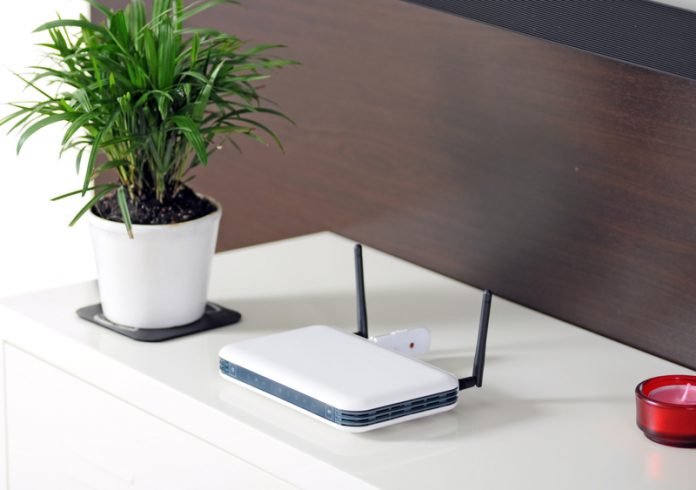Jim Sinopoli, Managing Principal at Smart Buildings LLC highlights the benefits for Indoor Positioning Systems…
Studies have found that people spend 80-90% of their time indoors, so it’s no surprise that one of the most promising technologies for buildings is Indoor Positioning Systems (IPS). An IPS simply locates objects and people in a building and provides location dependent information and data to occupants to assist in finding their way. It has much more potential, such as providing valuable information to businesses and building owners, security and life safety aspects.
The most popular approach to the architecture of the IPS is “Bluetooth Beaconing”, although Wi-Fi can be used, it is not as accurate as Bluetooth. Bluetooth was created in 1994 to essentially replace short cables. Today every smartphone is Bluetooth enabled and we’re all familiar with using it to connect ear buds, headsets, printers, game consoles, keyboards, etc. It is the Bluetooth capabilities of smartphones together with the beacons that can provide the location of the smartphone users. The use of Bluetooth beacon have an accuracy around 0.3 meters (1 foot), with no latency. The ISP system will use a variety of methods to identify the location of a personal or object including triangulation, signal fingerprinting and direct association.
Large national and international companies have formed the In-Location Alliance for indoor positioning systems to standardise and commercialise the technology. The alliance includes large multi-national companies such as Nokia, Samsung, Qualcomm, Sony and dozens of other companies.
Some of the companies involved in IPS are high tech companies motivated to extend their existing outdoor mapping applications to the indoor environment where GPS doesn’t work well due to signal attenuation. In addition to extending their mapping applications and advertising revenue the companies have an opportunity to create a treasure trove of data that will assist businesses, primarily retail, in identifying customers and product placement.
One of the key metrics for building management is data on how occupants are using building spaces. That may include when and where building occupants enter and exit a building, what building spaces occupants inhabit, what time or day they occupy the area 8, duration of occupancy, etc. Such data can be used to optimise the building operations, correlating the occupant data to building systems, energy consumption, space utilisation, and even utilising the data for renovations of existing buildings or design of new buildings. IPS could also be part of addressing life safety events, for example locating people for safety and security purposes in an emergency.
IPS technology can be used for almost any size building but appears to be particularly well-suited for large commercial buildings, educational campuses, malls, airports and museums.
Some of the applications involve real time location of personnel such as doctors, supervisors, technicians, or tracking team members and assets on missions in dark or crowded locations. Some companies have also used IPS to identify occupancy and adjust energy management systems based on where people are gathered.
IPS has many uses such as life safety and security, providing an innovative way to locate and communicate with people inside buildings during emergency situations. The United States Federal Communications Commission (FCC) is looking at indoor positioning to enhance emergency response as well. FCC has suggested a current baseline for indoor positioning for use in emergency response. One of the concerns is determining vertical location in a multilevel building.
An FCC report concludes: “While the location positioning platforms tested provided a relatively high level of yield, as well as improved accuracy performance, the results clearly indicate additional development is required”.
It is worth noting that over 70% of all emergency calls come from mobile phones. The indoor positioning system can also be used in conjunction with an Access Control System to trigger an alarm notification if a worker or asset enters or leaves certain predefined zones.
Many deployments of indoor positioning systems use multiple technologies; Wi-Fi and Bluetooth BLE. Such installations strive for more precise and exact locations. Multiple technologies also provide some resiliency and reliability in the system, and the use of multiple technologies may allow for compatibility with a larger spectrum of support for user smartphone and tablet devices.
Given the high profile incidents that are occurring with growing frequency in shopping malls, office buildings, schools and even government facilities, hybrid IPS technologies combining Wi-Fi and beacons offer the best methodology available to protect individuals, reduce injuries and prevent loss of life. Indoor Positioning Systems do not work without indoor maps. Building owners will need to survey their area and incorporate the maps into the facility’s app.
We track and locate people and objects outdoors in real-time via GPS; IPS provides for similar tracking indoors. In the near future it may be that there will be few places on Earth where we can’t be tracked and identified.
Jim Sinopoli
Managing Principal
Smart Buildings LLC
jsinopoli@smart-buildings.com











